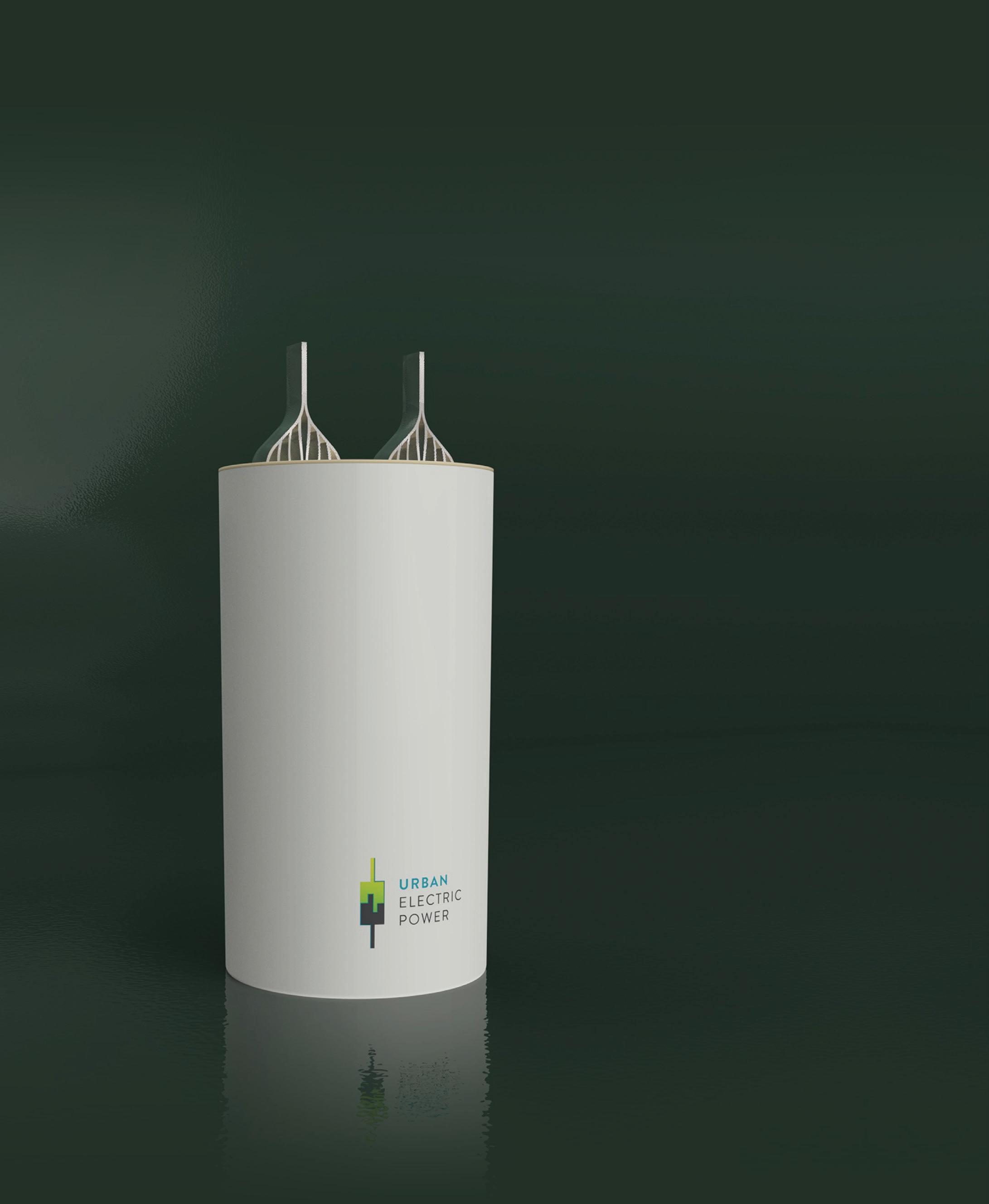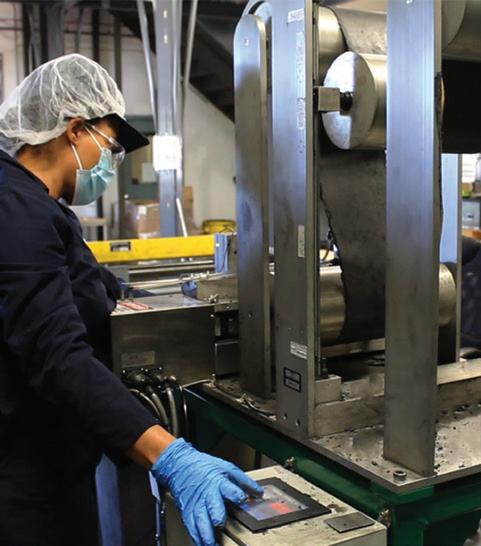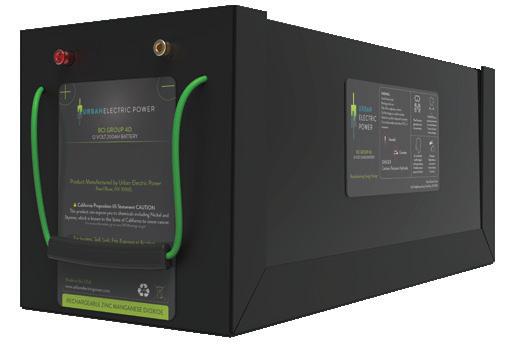
5 minute read
The Zinc Advantage: How fires and supply chain concerns are driving attention towards zinc battery chemistries
The Zinc Advantage
How fires and supply chain concerns are driving attention towards zinc battery chemistries
Advertisement
by Ann Marie Augustus
The tendency of lithium-ion batteries to fuel hot-burning, hard-to-extinguish fires made headlines over the summer, after a giant grid-scale battery caught fire in Australia. The blaze1 took 150 firefighters four days to put out, and postponed for months the testing of a 450 megawatt-hour (MWh) array.
Fire-prone lithium-ion batteries also set back the EV market this summer, which featured product recalls2 and recommendations that owners park their vehicles outdoors because of the fire risk. Firefighters say3 when an EV catches fire in an accident, it can take 40 times as much water to put out as a typical car fire.
In the residential solar-plus-storage market, fire and toxic smoke hazards have prompted further recalls stemming from the potential for thermal runaway in lithium-ion batteries.
New York City, where I live, remains cautious about allowing indoor battery energy storage, and with good reason. Since 2019, even installing lithium-ion batteries outdoors has required a special permit.
Julian Bazel, the Fire Department of New York’s fire code counsel, said the department was initially concerned about fires sparked by batteries in phones and skateboards. He was quoted4 as saying, “It’s one thing to deal with it when it’s a consumer product, but when it’s put near buildings, it’s a bigger problem.”
To address the persistent fire hazards posed by lithium-ion and continue to install energy storage throughout the five boroughs, we need products that are safe for use indoors. In these ultra-dense urban environments, fire safety is crucial.
“If you look past lithium ion, probably zinc is the next metal that’s the most popular for energy storage,” according to5 Mike Gravely of the California Energy Commission, “and it does appear to be able to provide performance equal to or better than lithium if given a chance.”
The industry’s Zinc Battery Initiative6 points out that Allesandro Volta relied on zinc to build the world’s first battery two centuries ago. Thomas Edison patented a nickel zinc battery in 1901. And of course, zinc remains the primary electrode in today’s consumer AA, AAA, C, D, and 9-volt batteries.
Zinc batteries offer a wider operating temperature range, longer calendar life, and a lower cost per kilowatt-hour than today’s leading batteries, including lithium, according to the industry initiative. They offer flexible designs with the broadest operating temperatures, highest power discharge in seconds to one hour, and long-duration storage. They’re non-toxic, recyclable, and made from abundant and inexpensive materials, so are more environmentally friendly and sustainable. And they are non-flammable, so they’re recommended where physical safety is essential. “One size doesn’t fit all,” says the industry initiative seeking broader adoption of this alternative to lithium.
A variety of zinc-based batteries are now reaching the residential, commercial, and utility-scale energy storage markets — including a rechargeable version7 of the familiar zinc manganese-dioxide chemistry in household alkaline batteries. Recently, a nationally recognized testing lab certified to UL standards8 that such a battery is not subject to thermal runaway.
This raises the prospect that zinc battery customers can forego the elaborate fire suppression and active liquid cooling systems needed for lithium-ion batteries. They can also save money over lithium-ion, which, due to its expense and thermal runaway risk, may turn out to be mismatched for many residential, commercial and grid-scale power backup, solar+storage, and microgrid applications.
Zinc-based batteries avoid the need for conflict minerals such as cobalt, an element of lithium-ion batteries often supplied by child miners in the Congo — not to mention lithium itself, heavily sourced from Australia and Chile, with much of it refined in China under processes that are energy and water intensive.

The lone large-scale U.S. lithium mine produces just 5,000 tons a year9. The company proposing a second — in Nevada, like the first — has said it will require 3,224 gallons of water per minute, and that the lithium will be extracted by mixing clay dug from the mountainside with as much as 5,800 tons a day of sulfuric acid. It aims to increase U.S. production by 66,000 tons a year; permit documents say10 it will also create 354 million cubic yards of mining waste containing acid discharge and possibly radioactive uranium.
The advantages for developing countries of finding alternatives go beyond the supply chain. Once manufactured, lithium-ion batteries are typically expensive and may be hard to get. Many communities still rely on lead-acid batteries for dispersed lighting and charging, adding to their pollution and recycling challenges. One in three children in the world is exposed to lead poisoning, according to UNICEF11 , posing a major environmental justice issue. And even lead-acid batteries can suffer thermal runaway.
In the rush to spread the advantages of energy storage across the U.S. economy — including the opportunity to capture and use more clean energy — we should ask ourselves whether lithium-ion’s higher expense and its other impacts12 are worth it, and which battery chemistry is really best for a given job.

Ann Marie Augustus is Vice President of Operations for Urban Electric Power, inventor of a rechargeable zinc manganesedioxide alkaline battery for residential, commercial, and grid-scale energy storage.
Urban Electric Power /// urbanelectricpower.com
1 www.cnbc.com/2021/08/05/tesla-megapack-fire-highlights-early-stage-issues-withbig-batteries.html
2 www.nhtsa.gov/press-releases/recall-all-chevy-bolt-vehicles-fire-risk
3 www.businessinsider.com/tesla-crash-fire-lithium-battery-austin-more-water-thanregular-2021-8#:~:text=%22Normally%20a%20car%20fire%20you,that%20was%20 the%20case%20here.%22
4 www.amny.com/news/lithium-battery-buildings-1-36172686/
5 www.forbes.com/sites/jeffmcmahon/2020/10/06/california-shifts-attention-fromlithium-ion-to-zinc-energy-storage/?sh=7d156d4a1875
6 www.zincbatteryinitiative.com/
7 pv-magazine-usa.com/2021/06/30/urban-electric-powers-long-term-storagesolution-takes-battery-storage-back-to-the-basics/
8 https://solarbuildermag.com/batteries/urban-electric-powers-rechargeable-alkalinebattery-passes-thermal-runaway-test/
9 www.nytimes.com/2021/05/06/business/lithium-mining-race.html
10 int.nyt.com/data/documenttools/thacker-pass-feis-chapters1-6-508/ f5d9956ac05f6601/full.pdf#page=153
11 www.nytimes.com/2020/07/29/world/americas/lead-poisoning-children.html#: ~:text=poisoning%2Dchildren.html-,One%20in%20Three%20Children%20Have%20 Unacceptably%20High%20Lead%20Levels%2C%20Study,Pure%20Earth%2C%20 an%20advocacy%20group.
12 www.nytimes.com/2021/05/06/business/lithium-mining-race.html#:~:text=Most%20 of%20the%20raw%20lithium,said%20in%20a%20recent%20interview.




